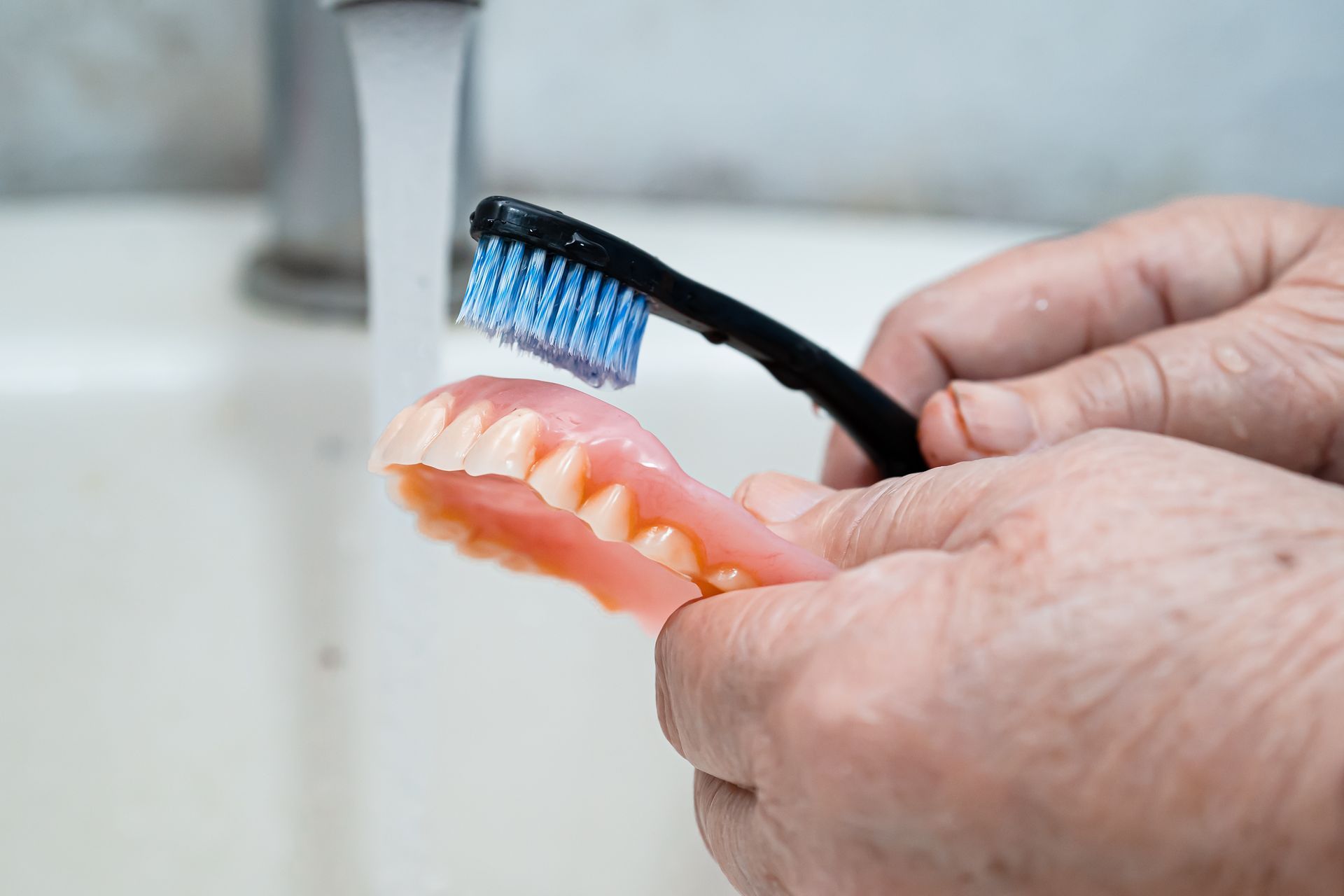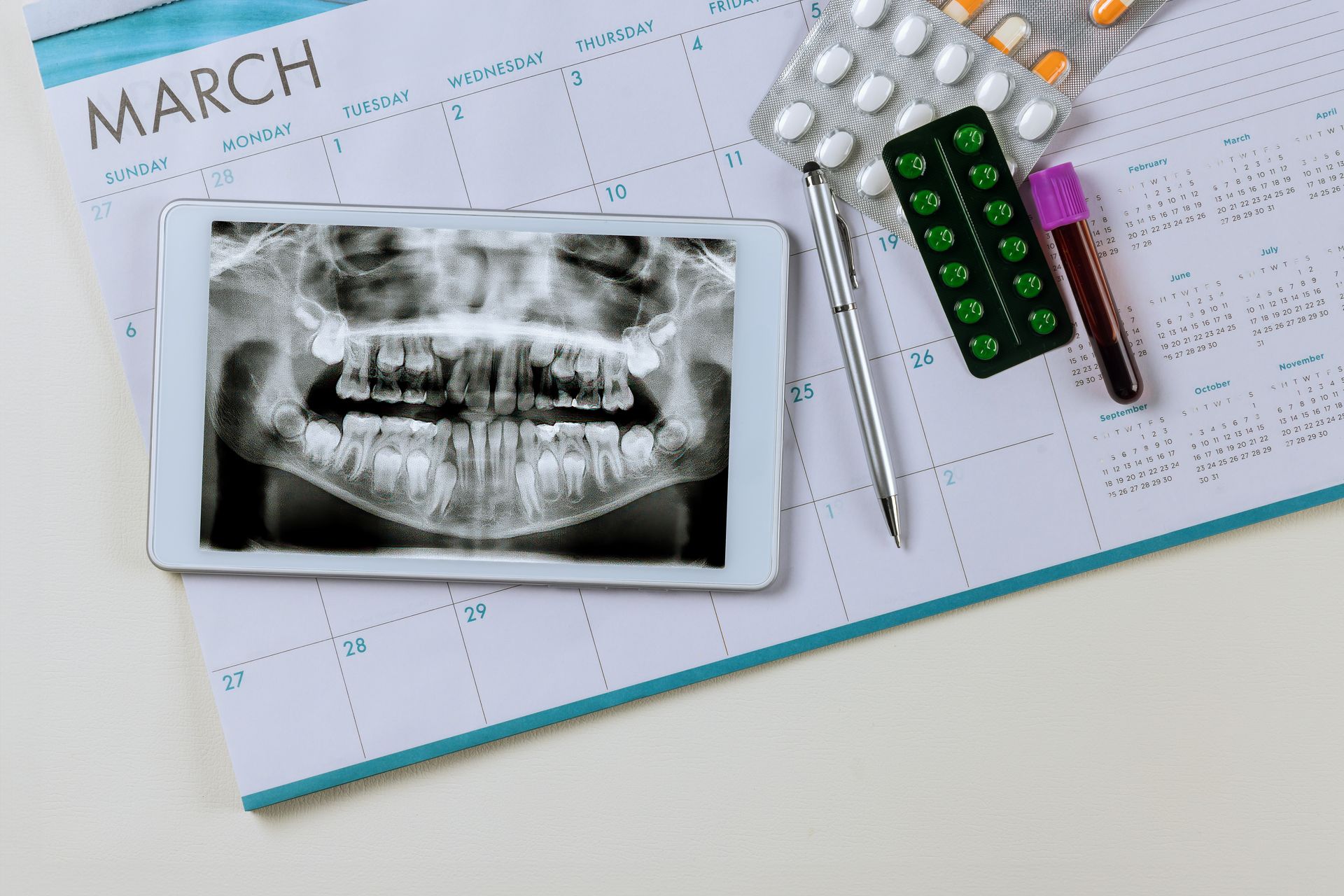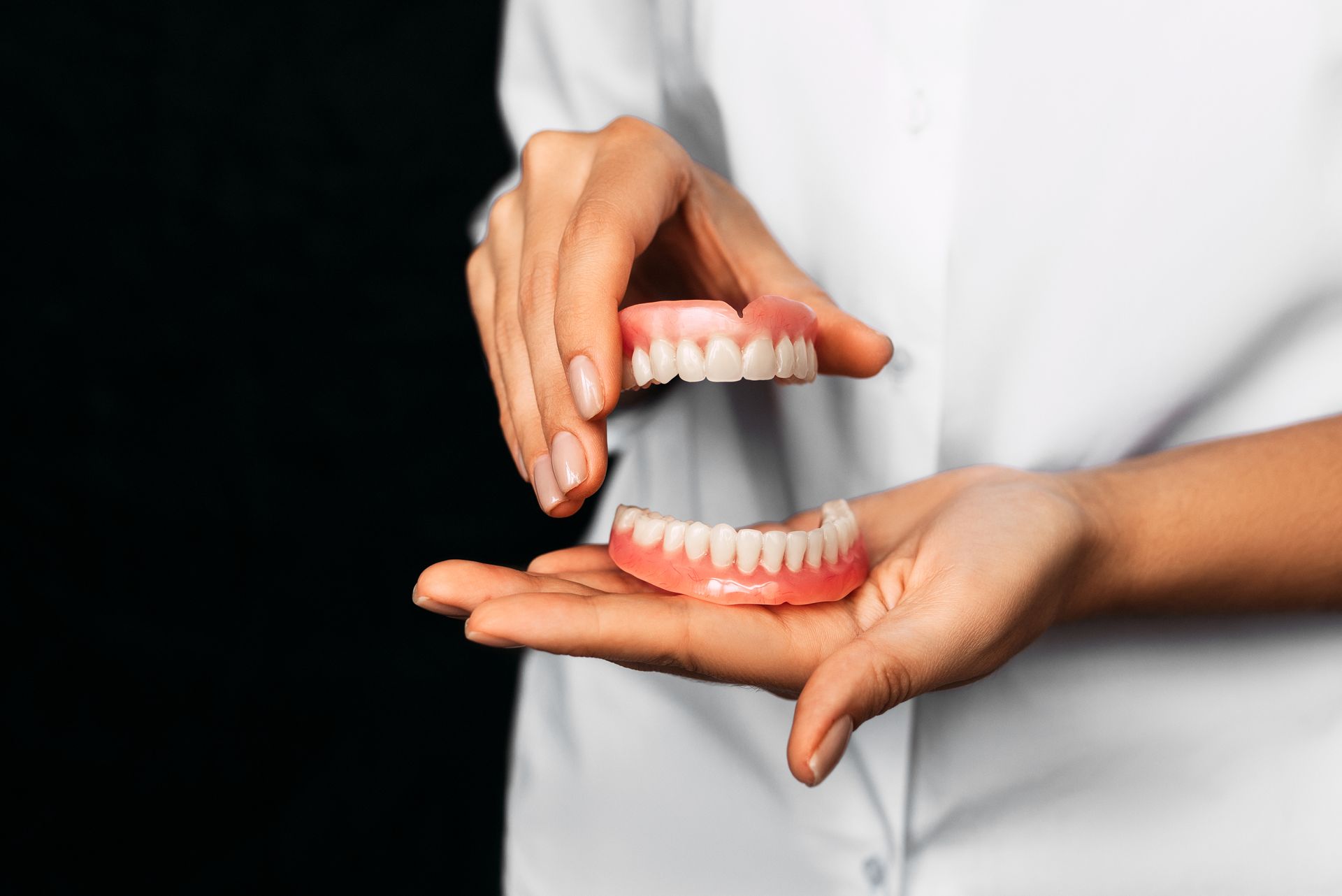Can Implants on Front Teeth Be Used?
Missing a front tooth? Implants on front teeth are a durable solution that feels and looks natural. A common issue, a missing front tooth can be effectively addressed with computer-guided implant placement, offering significant benefits over bridges and removable dentures. In this article, you’ll learn how they work, their benefits, the procedure, and who can get them.
Key Takeaways
- Front tooth dental implants provide a durable and natural-looking solution for missing teeth, positively affecting bone preservation and facial structure integrity.
- Immediate implant placement can lead to better osseointegration and aesthetic results, while delayed implant placement may come with potential bone loss and gum recession.
- Choosing between titanium and ceramic implants depends on individual needs and preferences, with titanium offering durability and zirconia providing better esthetics but increased brittleness.
Understanding Front Tooth Implants
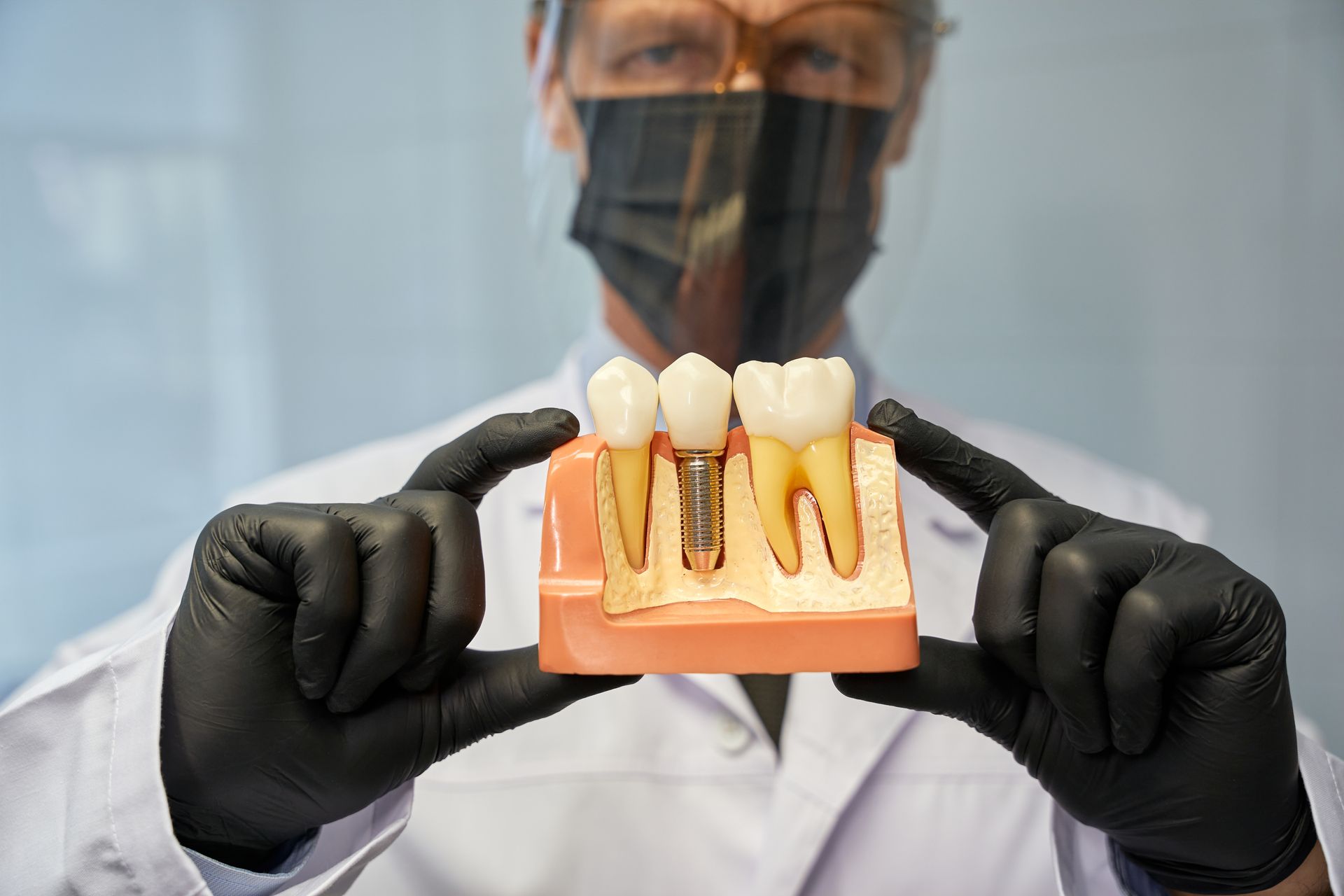
When a front tooth goes missing, it’s not just your smile that suffers. The absence of a tooth can lead to adjacent teeth shifting, bone loss, and even changes in facial structure. This issue is especially noticeable when dealing with missing front teeth. Enter the hero of our story: the front tooth dental implant. This dental marvel is a tooth root replacement option that anchors directly into the jawbone, providing a foundation for an artificial tooth that looks and functions like your natural tooth. Dental implant surgery replaces missing tooth roots with metal posts—typically crafted from titanium or zirconia—topped with a ceramic crown that mimics the luster and feel of your original tooth.
But why choose a front tooth dental implant over other tooth replacement options like dental bridges or partial dentures? Here are some reasons:
- Front tooth implants have an impressive track record of strength, durability, and stability.
- They play a crucial role in preserving bone and preventing the unsightly bone defects that can occur with tooth loss.
- They help maintain the structural integrity of your face, keeping sagging skin and collapsed cheeks at bay by supporting facial tissues.
Perhaps the most compelling aspect of dental implant front teeth is their natural appearance. They integrate so seamlessly with your smile that they’re often indistinguishable from your adjacent teeth. This makes them an ideal solution for front tooth replacement, ensuring your smile remains as beautiful as it is functional. Whether you’re missing one tooth or several, front-tooth dental implants represent the pinnacle of tooth replacement technology.
Benefits of Front Tooth Dental Implants
At the heart of their popularity, front tooth dental implants offer a suite of benefits that go beyond mere aesthetics. Have you ever bitten into a crisp apple or spoken with confidence at a social gathering? Dental implants restore these simple pleasures by mimicking the biting force and stability of your natural teeth. This high durability isn’t just talk; with a success rate soaring above 97% over a decade, it’s clear that implants are built to last.
Esthetics play a significant role in the appeal of dental implants. They are designed to:
- Prevent gingival recession and damage to neighboring teeth, ensuring that your smile stays as pristine as the day your implant was placed.
- Fill the gap left by a missing tooth, keeping adjacent teeth stable and preventing them from shifting out of place, which could lead to bite issues.
- Provide ease of care; much like natural teeth, implants can be brushed and flossed without the need for specialized tools or techniques.
Imagine engaging in conversation or enjoying your favorite meal without a second thought. Dental implants enable normal speech patterns and efficient chewing, which means no more worrying about dentures slipping or missing out on your favorite foods. Whether you’re giving a toast at a wedding or crunching on a granola bar during a hike, implants allow you to live your life to the fullest—no holds barred.
Immediate vs. Delayed Implant Placement
Timing is everything, especially when it comes to implant placement. Picture this: you’ve just had a tooth extraction. What happens next could significantly impact the future of your smile. Immediate implant placement is the process of installing the implant right after a tooth extraction. This proactive approach is key to preserving as much bone as possible, which is particularly crucial in the front of the jaw where esthetic outcomes are paramount. But the benefits don’t stop there—studies suggest immediate placement can lead to better osseointegration, the process where the implant fuses with the jawbone, resulting in a more stable and enduring restoration.
On the flip side, delayed implant placement involves a waiting period of approximately four months after the tooth extraction before the implant is placed. While this allows time for bone grafting if necessary, it may result in less optimal esthetic outcomes due to potential bone loss and gum recession during the waiting period.
The choice between immediate and delayed implant placement boils down to individual circumstances and the professional recommendation of an experienced dentist. Osseointegration, the cornerstone of implant stability, takes time—several months. A thorough evaluation of the implant site and your overall dental health will inform the best timing for your implant surgery. In some cases, waiting may be beneficial, while in others, swift action could be the key to a flawless finish.
Choosing Between Ceramic and Titanium Implants
In the realm of front tooth implants, the materials used are as vital as the surgeon performing the procedure. Titanium has long been the go-to choice for dental implants due to its durability and biocompatibility, having set the standard for over 65 years. Resistant to external forces and boasting excellent mechanical properties, titanium implants promise long-term durability and peace of mind. However, they may not always be the prime option for patients with metal sensitivities or those concerned about esthetics.
Enter ceramic implants, or more specifically, zirconia. Prized for their hypoallergenic properties and natural tooth color, zirconia implants are a game-changer for those seeking a more inconspicuous dental solution. They blend seamlessly with the surrounding teeth, especially in cases where the gums are thin and a titanium post might leave a visible grey line. But it’s not just about looks; ceramic implants are also corrosion-resistant, adding to their allure.
While zirconia implants offer superior esthetics, they do have a downside. Their brittleness can make them susceptible to fracture under stress, which may not match the longevity of their titanium counterparts. Additionally, they come with a heftier price tag due to higher manufacturing costs and a more meticulous placement process. The decision between ceramic and titanium implants hinges on individual needs, preferences, and the professional judgment of a skilled dentist.
The Procedure of Front Tooth Implant Surgery
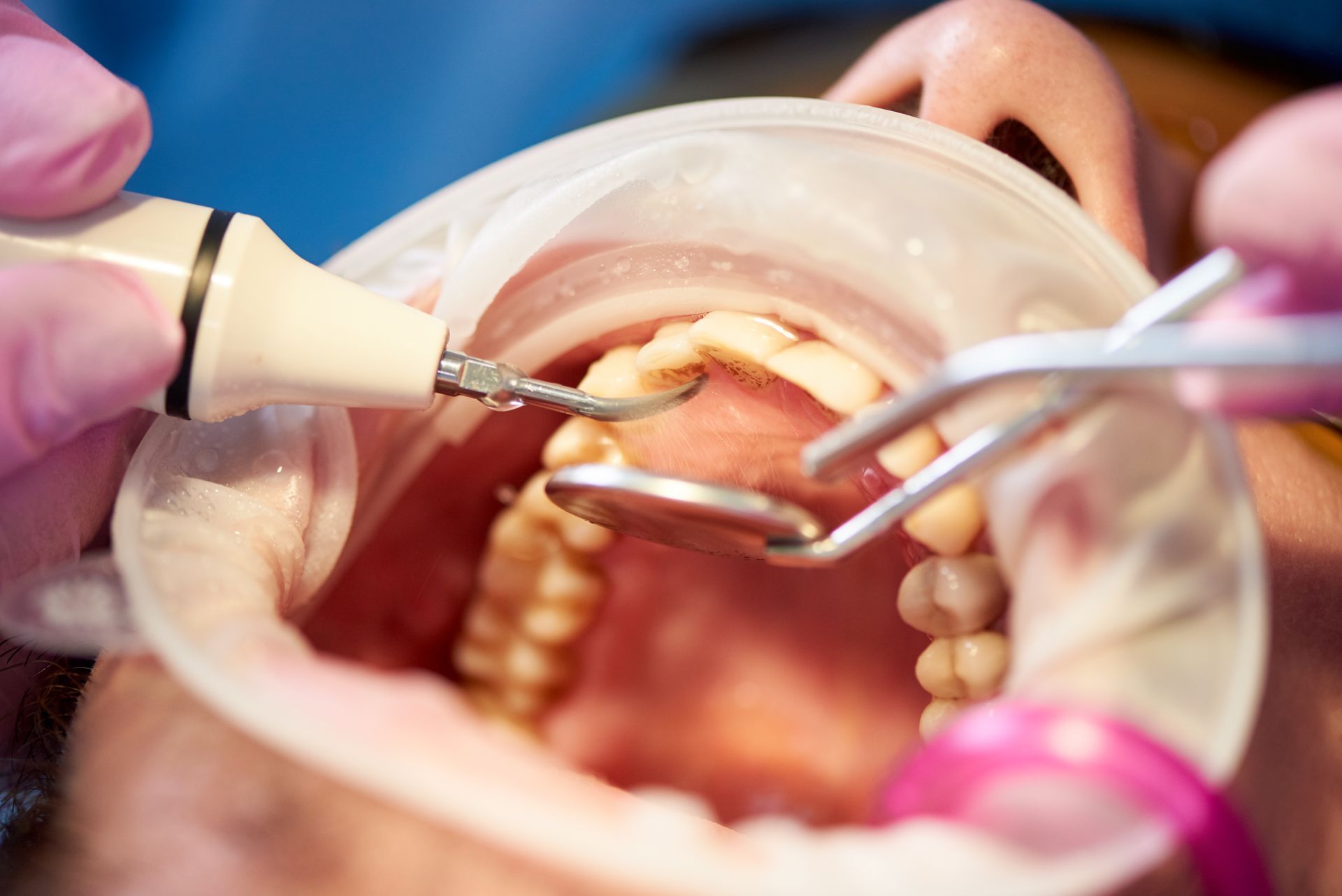
Embarking on the journey of front tooth dental implant surgery is a step-by-step adventure, tailored to each person’s unique dental landscape. It all begins with a comprehensive dental exam, employing X-rays and 3D imaging to map out a custom treatment strategy that takes into account the number of teeth to be replaced and the condition of the jawbone. The procedure unfolds in stages:
- Removal of the damaged tooth
- Jawbone preparation (if required)
- Implant placement
- Bone growth period
- Abutment placement
- Attachment of the artificial tooth
The abutment, a critical component of the implant, acts as a bridge connecting the dental implant to the artificial tooth. This may require a separate, minor surgical procedure to ensure a secure fit. While it may sound daunting, patients need not worry about walking around toothless during the process. Temporary teeth are provided on the day of surgery, allowing you to smile with confidence as your implant site heals.
Once the healing process is complete—a period that could span several months—a new, permanent tooth is crafted and fitted snugly onto the implant. This tooth isn’t just a placeholder; it’s designed to look, feel, and function like a natural part of your smile, completing the transformative journey from tooth loss to dental restoration.
Temporary Solutions During Healing
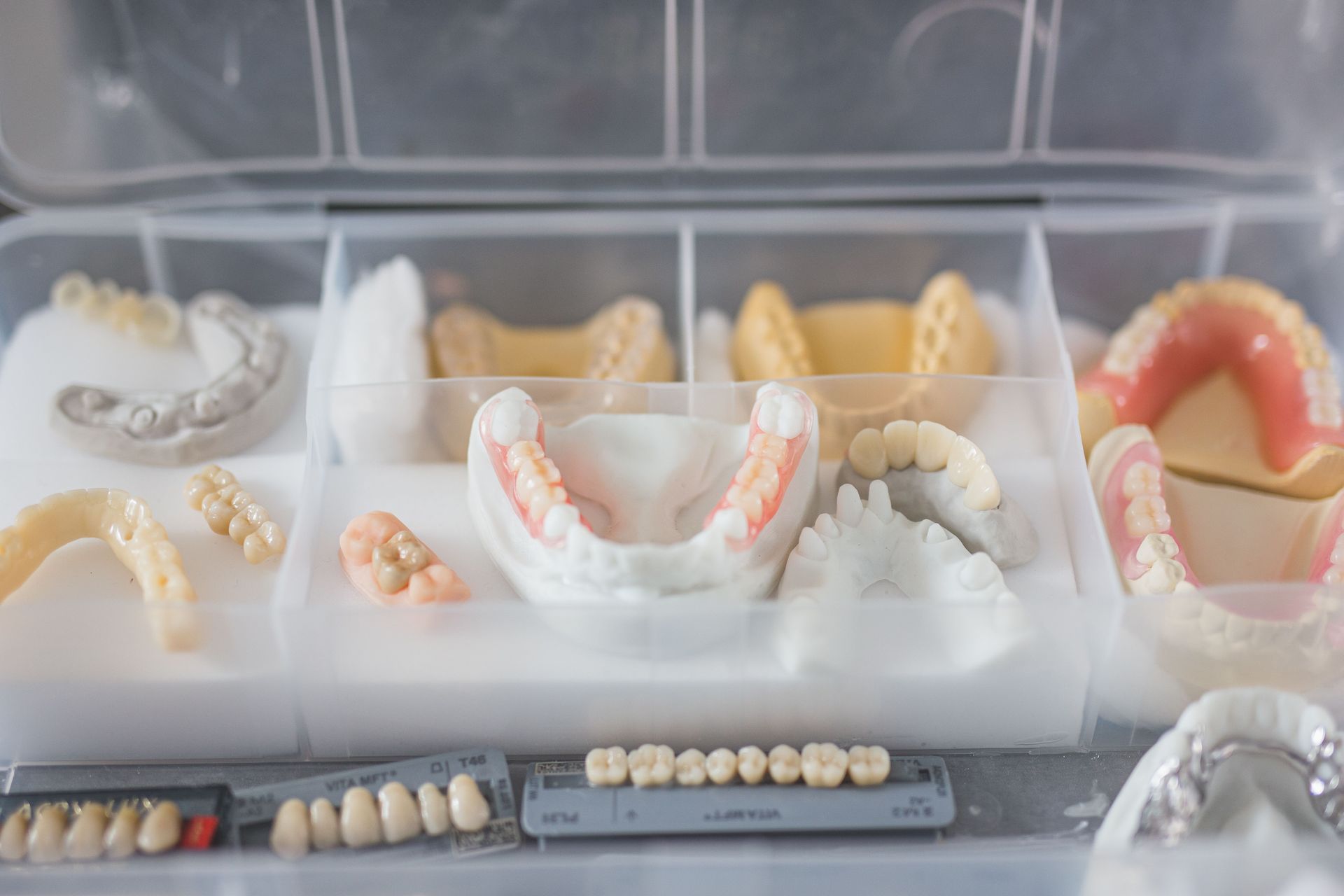
So, what happens in the interim while the implant integrates with your jawbone? The answer lies in temporary teeth, which serve as placeholders to maintain your appearance and oral function during the healing period. These temporary prosthetics, typically made from acrylic, are more than mere stand-ins; they’re carefully crafted to resemble your natural teeth, ensuring that your smile remains uninterrupted.
For those who have lost a larger area of teeth, removable devices can be created, offering a flexible and easily adjustable solution during recovery. Temporary teeth can also be bonded to adjacent natural teeth, providing a seamless aesthetic that blends in with your existing smile. While these temporary solutions allow you to carry on with daily activities like eating and speaking, it’s important to treat them with care, avoiding biting down hard to ensure they stay intact until the permanent implant is ready.
The transition from temporary to permanent teeth is a pivotal moment in the implant journey. Designed to mimic the look and function of your natural teeth, the temporary crown sets the stage for the final, enduring solution that awaits. Once the implant site is fully healed, your dentist will replace the temporary crown with a permanent one, completing the circle of restorative dental care.
Caring for Your Front Tooth Implant
New Paragraph
After the meticulous process of implant surgery, proper care is crucial to ensure your implant thrives for years to come. Here are some important care tips for front tooth implants:
- Routine brushing with a soft-bristled toothbrush.
- Flossing with implant-specific floss to prevent plaque buildup around the implant and ensure the health of the surrounding gums.
- Regular dental check-ups and cleanings to monitor the implant and address any issues.
- Avoiding hard or sticky foods that could damage the implant.
- Quitting smoking, as it can negatively impact the success of the implant.
Just like your natural teeth, front tooth implants require daily hygiene and regular dental care to maintain their integrity and functionality.
It’s not just about brushing and flossing, though. To safeguard your implant, it’s wise to:
- Avoid chewing on hard objects that could damage the implant or the crown.
- Steer clear of abrasive toothpaste and hard, sticky, or overly hot foods that could compromise the implant’s structure.
- If you’re someone who grinds their teeth at night, consider using a mouthguard to protect your implant from excessive pressure.
In addition to these daily maintenance routines, it’s essential to follow your dentist’s advice on care and maintenance. This might include using non-alcoholic mouthwash, limiting consumption of alcohol, and regular dental check-ups to monitor the health of your implant. With the right care, your front tooth implant can continue to function flawlessly, just like a natural tooth, for many years.
Before and After: Real-Life Cases
There’s nothing quite like seeing the transformative impact of front tooth dental implants on someone’s life. In one remarkable case, a patient presented with a missing front tooth and a broken tooth, only to walk out with a dental implant and crown fitted in a single day, instantly restoring their smile and confidence. Another patient, born without front teeth, received implants and custom crowns that provided a natural-looking smile that had been elusive for years.
These real-life stories exemplify the profound difference that front tooth implants can make, not just aesthetically but in overall quality of life. The before-and-after results speak volumes about the power of this dental technology to restore a person’s natural appearance and self-esteem. It’s a testament to the blend of art and science that is modern dental implantology.
Who is a Candidate for Front Tooth Implants?
Not everyone is an ideal candidate for front tooth implants, but for many, it’s a viable and life-changing option. Good overall health is the cornerstone for successful implant integration with the jawbone and is essential to minimize complications during the healing process. Adequate bone density is another key factor, as the jaw must be robust enough to support the implant and ensure its long-term stability.
Healthy gums are non-negotiable when it comes to implants. Since periodontal disease can adversely affect the longevity and integration of the implant, it’s crucial for potential candidates to have their gum health in check. Additionally, lifestyle choices such as smoking can hinder the body’s healing abilities, making smokers less ideal candidates for this procedure. Whether you’ve lost a tooth due to fracture, decay, or gum disease, dental implants can be an effective replacement solution.
The journey to a front tooth implant begins with a comprehensive evaluation by an experienced dentist who can assess your medical history, bone density, and overall suitability for the procedure. If you tick all the boxes, you could be on your way to a restored smile that feels as natural as it looks.
Common Challenges with Front Tooth Implants
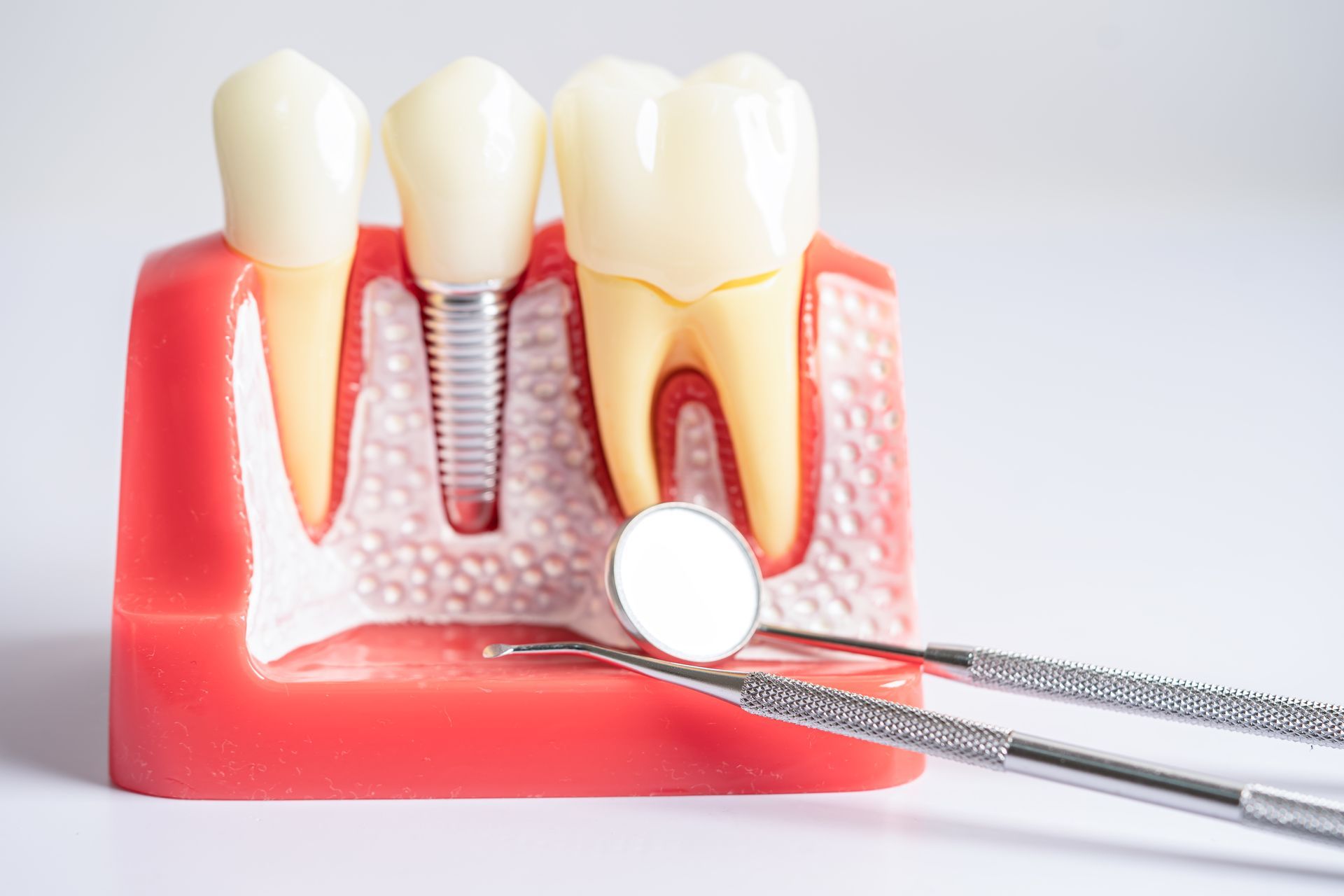
While front tooth implants are a revolutionary solution for many, they are not without their challenges. One significant risk is the possibility of infection at the implant site, which can lead to complications and even implant failure. The placement of upper jaw implants requires precision, as a misstep could lead to protrusion into the sinus cavities, resulting in sinusitis.
Gum recession around the implant can expose the metal post, causing inflammation and pain, while nerve or tissue damage can result from an implant placed too close to a nerve, manifesting as numbness, tingling, or pain. Peri-implantitis, a form of gum disease specific to dental implants, can lead to bone loss and implant loosening, compromising the stability and longevity of the implant.
To navigate these challenges successfully, the expertise of an experienced family dentist like Dr. Bilus is invaluable. Not only can they help restore your smile if you’re missing a front tooth, but their skill and knowledge can significantly reduce the risk of complications. It’s crucial to understand that conditions like diabetes, gum disease, or smoking can reduce the success rate of dental implants, and rare cases of metal sensitivity may necessitate alternative solutions. With the right care and a skilled dentist, however, the journey to a perfect smile can be smooth sailing.
Summary
Embarking on the path to a front tooth implant is a journey filled with choices and considerations, from understanding the procedure to selecting the right implant material and ensuring proper aftercare. The benefits of a restored smile and renewed confidence are immeasurable, and with the guidance of a skilled dental professional, the challenges can be navigated with ease. As we’ve delved into the intricacies of front tooth implants, it’s clear that they represent a pinnacle of dental technology, offering a reliable and aesthetically pleasing solution to tooth loss. For those who take the plunge, the results can be truly life-altering.
Frequently Asked Questions
Got a question? We’re here to help.

